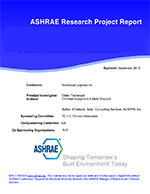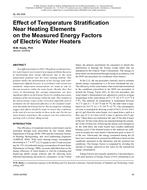Vertical ground heat exchangers are a common method of linking geothermal heat pump systems to the earth, and they consist of pipe installed into a borehole that is subsequently backfilled with a material that forms the heat transfer link between the pipe and earth. In many states, that material must also be a grout to form a barrier against water migration in any direction along the entire borehole length. Until recently, little attention has been given to the thermal properties of commonly used backfill and grouting materials or to the effect of the thermal conductivity of those materials on the thermal performance of the vertical ground heat exchanger. Laboratory studies were performed to determine the effect of grout thermal conductivity, borehole diameter, pipe size, and pipe configuration on the total thermal resistance in the borehole. It was found that borehole thermal resistance decreased with increasing grout thermal conductivity, but increasing grout thermal conductivity above 1.0 Btu/h·ft·°F provided very small additional reduction. The studies resulted in a set of relationships for borehole thermal resistance, depending on the pipe configuration in the borehole, that can be utilized in the calculation of design length of a vertical ground heat exchanger for a prescribed heating and cooling load. A series of independent field tests verified that the assumption of equal spacing between the pipes and the borehole wall conservatively accounted for the thermal conductivity of the backfill or grout material. The effect of increasing grout thermal conductivity from 0.43 to 0.85 Btu/h·ft·°F resulted in overall reductions in thermal resistance between the circulating fluid and the earth by 15.3% to 19.5%.
Units: Dual
Citation: Symposium, ASHRAE Transactions, vol. 105, pt. 1
Product Details
- Published:
- 1999
- Number of Pages:
- 17
- File Size:
- 1 file , 280 KB
- Product Code(s):
- D-7557


